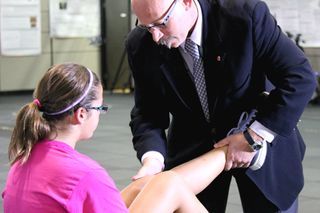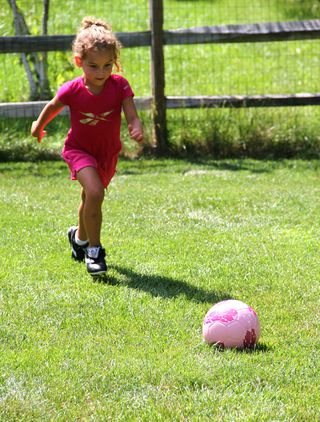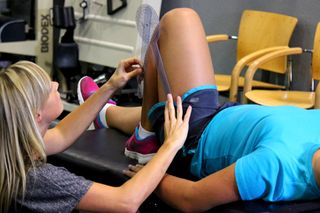
One-Sport Girls Risk More Injury, Weight Gain (Op-Ed)

Timothy Hewett is a professor and director of the Sports Health & Performance Institute and director of research, Sports Medicine at the Ohio State University Wexner Medical Center. He contributed this article to Live Science's Expert Voices: Op-Ed & Insights.
This September, millions of children are back in school and participating in their favorite sports, but young girls who focus on only one sport should consider signing up for more.

Some parents encourage their children to choose only one sport in hopes of gaining an edge on the competition and improving the chances of future success. You could call it the "Tiger Woods Syndrome" — young athletes feel like they have to zero-in on one single sport and play it year round. My research shows that strategy comes with the risk of some negative long-term effects.
I, along with my colleagues at The Ohio State University Wexner Medical Center, have followed more than 500 female athletes for more than a decade. Our study, published in the British Journal of Sports Medicine, shows that young girls who play only one sport have a 50-percent-higher risk of knee injury. The one-sport risk doesn't stop there. Those athletes who suffer a knee injury now are more likely to struggle with weight gain years after the injury.
Part of the problem is repetition — doing the same motions year after year can wear out bones and joints. It's called Wolfe's Law: The more you stress a biological structure, like a bone, a ligament or a tendon, the larger it gets. On the flip side, the less you use a bone, ligament or tendon, the smaller it may get and the weaker it may be.

In our study, we found that for young girls who play one sport and suffer a knee injury, their risk of long-term obesity increases 33 percent. In the short term, you might expect some weight gain because a knee injury often causes an athlete to reduce their physical activity level. If children continue to take in the same number of calories, but their physical activity level is reduced, they gain weight. What we found significant is that this is not just a problem immediately after the injury. Maintaining a healthy weight becomes a long-term challenge. When we follow the girls over multiple years, they tend to retain the weight gain well after they've recovered from their knee injury.
Our children are playing sports not only to have fun but to stay fit. That's why I recommend that young girls play more than one sport. It helps build core strength and balance several muscle groups.
Sign up for the Live Science daily newsletter now
Get the world’s most fascinating discoveries delivered straight to your inbox.

If you're playing three sports, like volleyball, basketball and soccer, you're not going to create as much imbalance on one limb or the front of the body relative to the back of the body, or one side versus the other.
At the end of the day, this is a decision each family must make based on their particular circumstances. Some children are only interested in one sport. Extra sports mean more practices, games and scheduling to juggle. But, in most cases, no matter how badly we want our young athletes to star in a specific sport, we need to realize that allowing them to play it all year round can negatively impact their long-term health.
I applaud all parents who make an effort to get their children positively involved in athletics. I hope the findings of my research will encourage them to explore even more athletic opportunities.
The views expressed are those of the author and do not necessarily reflect the views of the publisher. This version of the article was originally published on Live Science.
